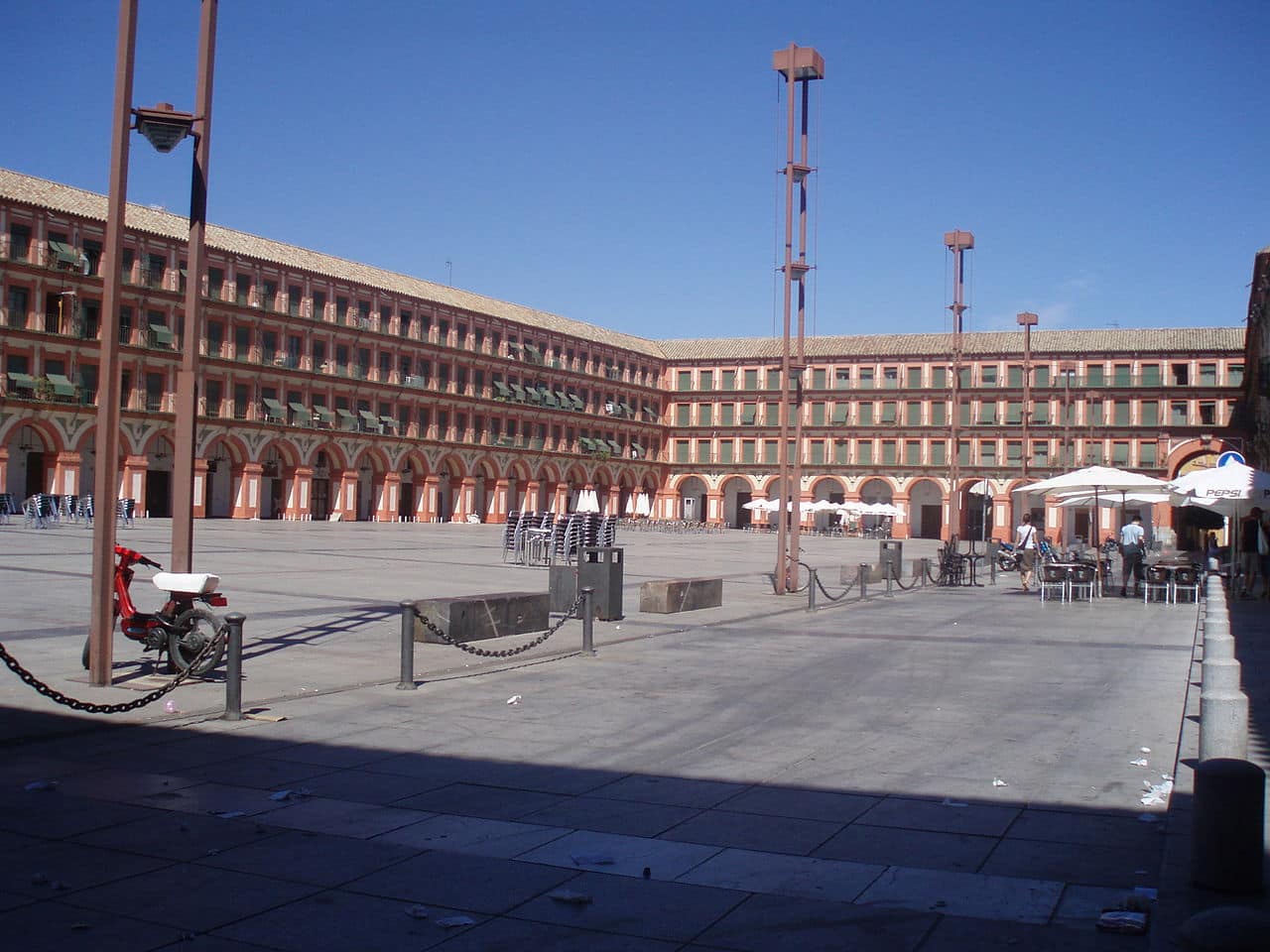
It is not easy to select what to see in Cordoba in one day. To give you an idea, we will tell you that it is the city of the world with more World Heritage titles. That is, the one with the most monuments that have received that distinction.
However, a twenty-four hour visit to this city of Andalusia will allow you to discover its main wonders, which include from Roman times to the present. However, the most outstanding belong to his caliphal splendor during the Muslim period. So that you can organize yourself, we are going to propose our plan of what to see in Córdoba in one day.
The Cordoba's mosque
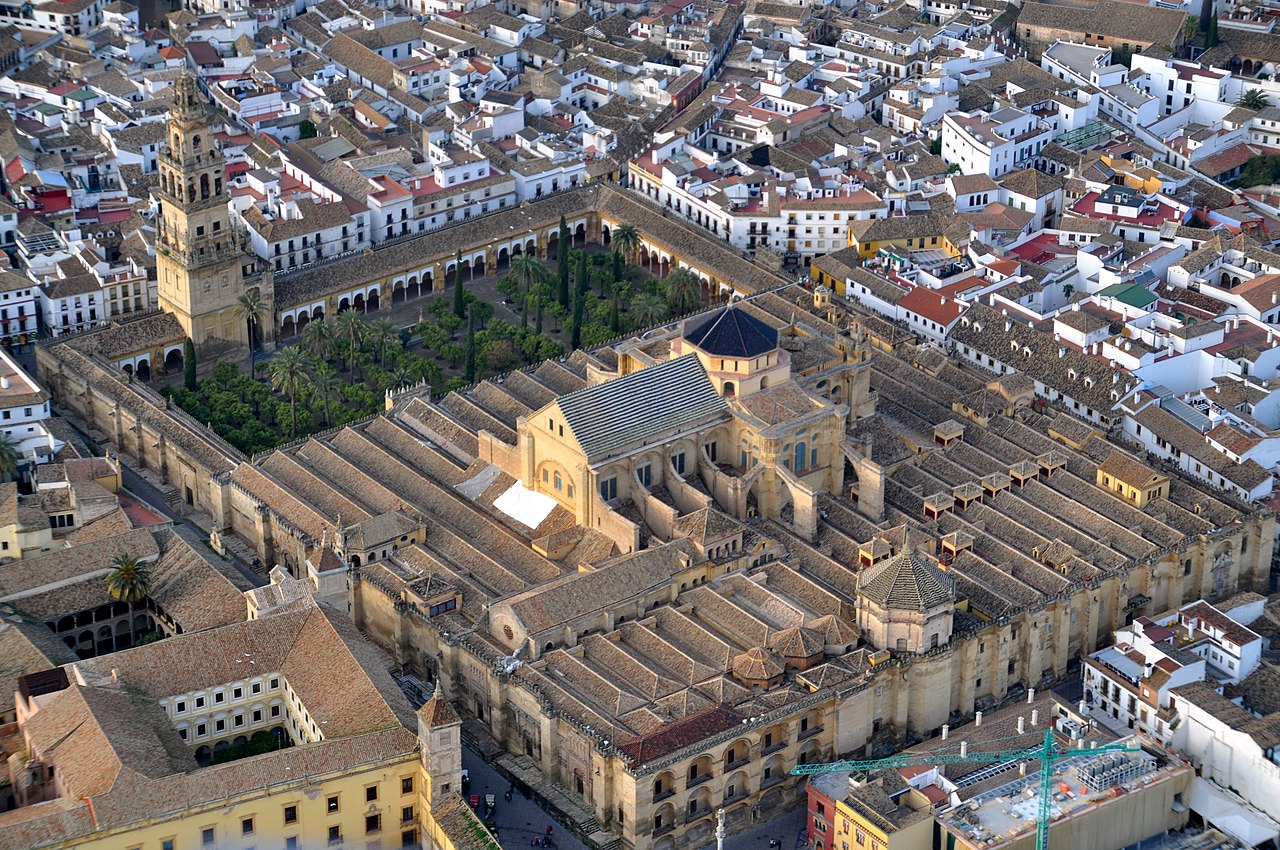
Aerial view of the mosque, essential among what to see in Córdoba in one day
It is probably the mosque great symbol from the Andalusian city. It was built at the end of the XNUMXth century, apparently on the remains of the Visigothic church of San Vicente Mártir, although greatly increasing its dimensions. Note that these are still impressive, but came to measure almost twenty-four thousand square meters.
After the Christian conquest of the city, he began to work as cathedral. And, already in the XNUMXth century, a basilica Plateresque features. However, the mosque is considered the best example of the Umayyad Hispano-Muslim art with The Alhambra of Granada. Not in vain, it is, precisely, a World Heritage Site and one of the most visited monuments in Spain. Therefore, it should always be included in your plan of what to see in Córdoba in one day.
It would be impossible to describe this marvelous construction in detail. However, on the outside there are elements such as the renaissance bell tower, which was built taking advantage of the old minaret, and the different facades, all of them with numerous doors. But, above all, you have to see the Courtyard of the Orange trees, with the fountains of Santa María and Cinnamon.
For its part, in terms of interior, the most famous is the so-called hypostyle room, which occupies most of the space and stands out for its numerous arches and columns. But you should also pay attention to the main chapel, in Renaissance style, although its altarpiece, designed by Alonso Matias, responds to later mannerism. No less spectacular are The chorus, with its mahogany wood chairs, and the retrochoir, of classicist lines. As for the chapels, the mosque has some as beautiful as that of Villaviciosa, which combines Mozarabic and Gothic elements; the real, in the Mudejar style, which stands out for its exquisite plasterwork and muqarnas decoration; Saint Ambrose's, with its precious golden baroque altarpiece, or that of Our Lady of the Conception, with its beautiful dome.
The old Jewish quarter
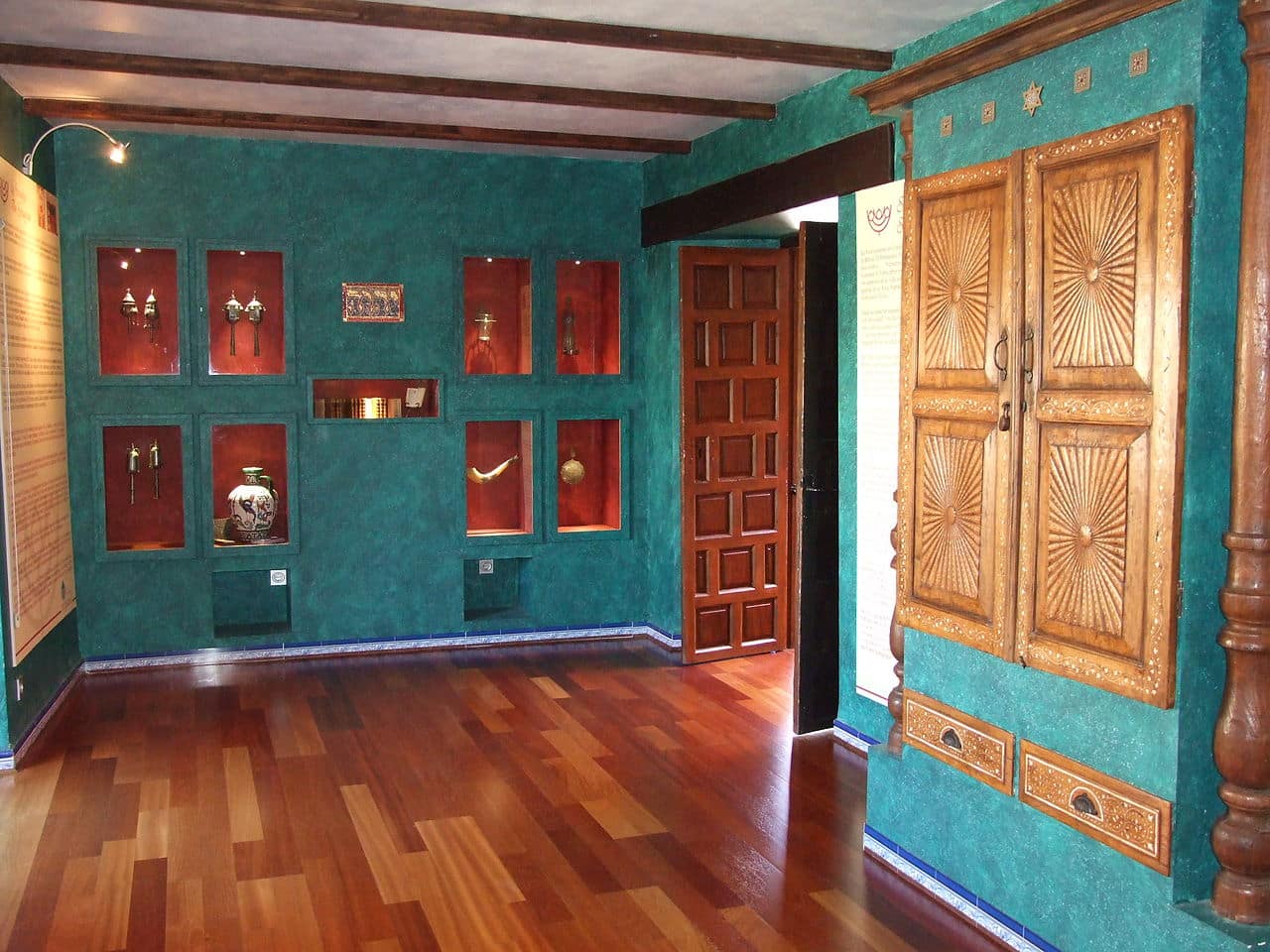
Synagogue room in the Casa de Sefarad
Very close to the mosque you have the old Jewish neighborhood From Cordoba. It is made up of irregular streets such as The one with the Handkerchief or the one with the Flowers. In it you can still visit the synagogue. It is the only one of its time that is preserved in Andalusia and one of the three that still exist in the set of Spain (the other two are in Toledo). It responds to the Mudejar style and was built in the XNUMXth century.
You should also see in the Jewish quarter the House of Sepharad, a Jewish construction from the same period as the previous one transformed into a museum dedicated to the sephardic culture. This Jewish community originally from our country has preserved up to the present its customs and its language derived from Spanish, known as Judeo-Spanish or Ladino. This museum has rooms such as those of Domestic Life, Sephardic Music, the Women of Al-Andalus or the Inquisition.
The Alcázar de los Reyes Cristianos

The impressive Alcázar de los Reyes Cristianos
If Muslim Córdoba was important, the Christian one had no less strength after the conquest of the city in 1236. For this reason, there are several monuments from this era that you should include among what to see in Córdoba in one day. We especially want to recommend the Alcazar of the Christian Monarchs, which was built between the XNUMXth and XNUMXth centuries, taking advantage of the old Umayyad palace.
Outwardly, it is an imposing building with an almost square plan and surrounded by four towers. They are that of Tribute, with an octagonal plan; that of the Lions, which is square and the oldest; that of the Inquisition, circular and also called the Gardens, and that of the Dove, square and that was rebuilt in the XNUMXth century.
For its part, inside, you can see the central gallery, which is adorned with statues of Seneca and Alfonso X the Wise. But the most valuable item of his is the Sarcophagus of the Gates of Hades, made in the third century after Christ in Carrara marble. Also from Roman times is the decoration of the mosaic room, while the Royal Baths of Doña Leonor They are in the Mudejar style.
However, another of the wonders of the Alcázar is its big garden, created taking advantage of the old orchard of the complex. It has an area of fifty-five thousand square meters and combines species such as the palm tree, the cypress or the orange tree with walkways, fountains and ponds. Among the first, it stands out the one of the Kings, so called because it is adorned with statues of the Christian monarchs who participated in the construction of the building. Among them, Alfonso XI, Henry II o Henry III.
Roman Cordoba
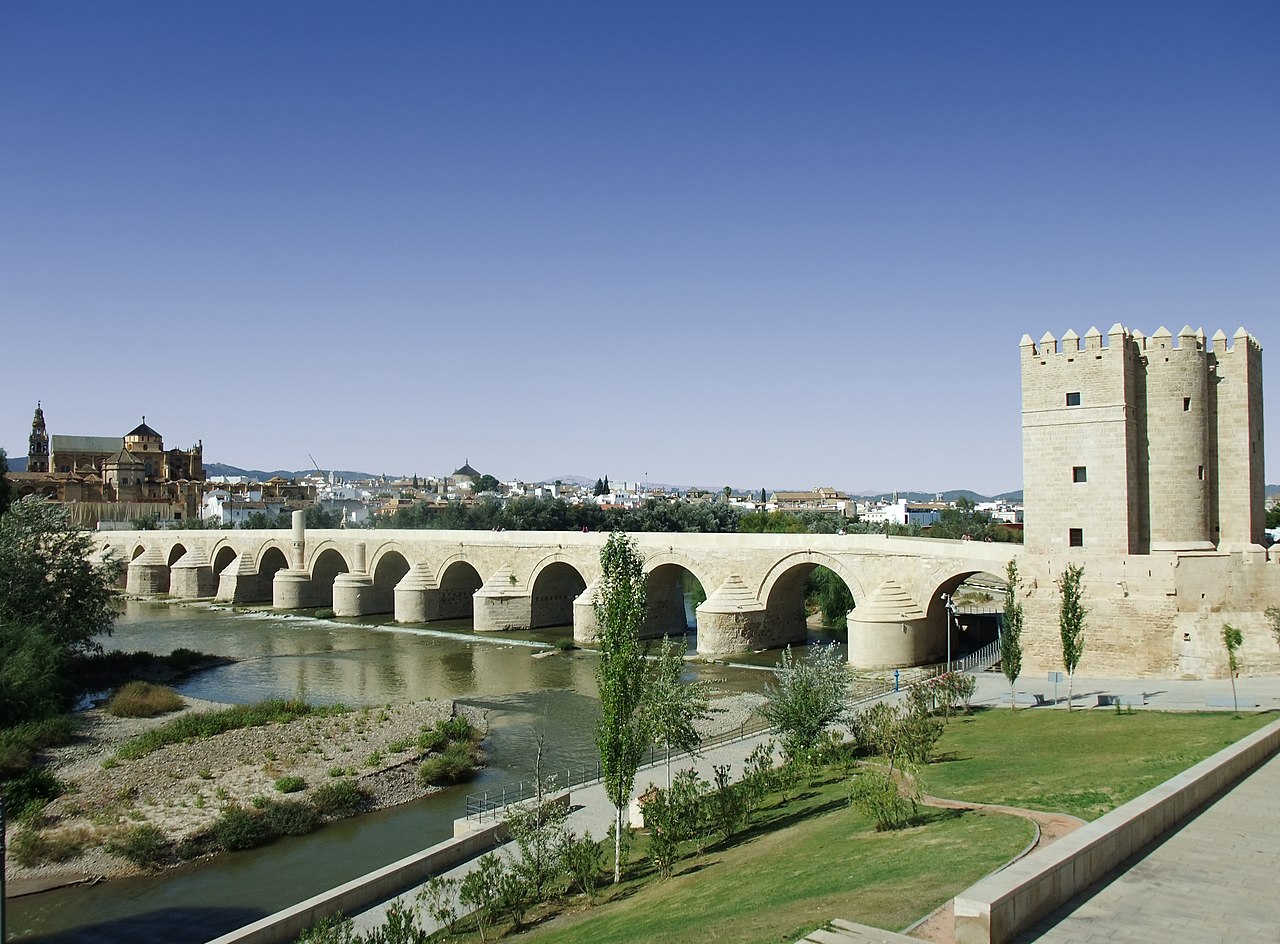
The magnificent Roman bridge of Cordoba and the Calahorra tower
As we have told you, Córdoba also had a latin past. As a sample of him, there have been remains such as the roman temple, which is located on Claudio Marcelo street. It was about thirty-two meters long by sixteen wide and was Corinthian in style. In addition, it was hexastyle, that is, it had a portico with six columns.
Likewise, in the basements of the Archaeological and Ethnological Museum are the remains of the old Roman Theatre, which, in its time, was the second largest in the entire Empire. At the Gallegos gate, you can also see two old latino mausoleums and remains of the colonial forum and a anfiteatro. In addition, at the Cercadilla site, traces of the palace of Emperor Maximian Herculean.
However, the great symbol of Roman Cordoba is its bridge over the Guadalquivir. It is a marvel of Latin engineering that, however, has been reformed on several occasions. Hence its magnificent state. Form well of cultural interest next to the bridge gate, one of the three that remain from the old wall (the other two are that of Almodóvar and that of Seville), and to the Calahorra tower. In turn, the latter is a fort of Islamic origin built precisely to protect that entrance to the city and reformed in the fourteenth century. Since 1987, it has housed the Living Museum of Al-Andalus.
The Fernandina churches, incomprehensible in one day in Córdoba

Santa Marina de Aguas Santas, one of the Fernandina churches of Córdoba
This name is given to a group of Christian temples that he had built Ferdinand III the Saint after conquering the city. However, some were simply reforms in mosques that, in turn, had been Visigothic churches. Its function was twofold. On the one hand, they served as spiritual center. But, on the other, they were the seat of the administration of each neighborhood o collation of the Córdoba of the time.
You will not be able to see all the Fernandina churches in one day visiting Córdoba, since there are no less than twelve. But we advise you to visit one of them. you can choose the Church of San Nicolás de la Villa, from the XNUMXth century and Mudejar Gothic style. However, its cover is more modern. Is due to Hernan Ruiz Jr. and it is renaissance in style. Likewise, its bell tower was built on the remains of an old minaret.
Likewise, it is magnificent Church of Santa Marina de Aguas Santas, which combines late Romanesque, Gothic and Mudejar styles. Its main façade is impressive, with two powerful buttresses and a rose window. No less beautiful is the altarpiece in the main chapel, with paintings by Antonio del Castillo and a picture of the Virgin of the Light work of gomez de sandoval.
Also the facade of the basilica of Saint Peter has two buttresses and a rose window, while the church of san miguel It is mainly Romanesque, with certain Gothic elements. Finally, other temples like those of San Juan and All Saints, San Agustín or San Andrés They also stand out among the Fernandina churches of Córdoba.
Other monuments to see in Córdoba in one day
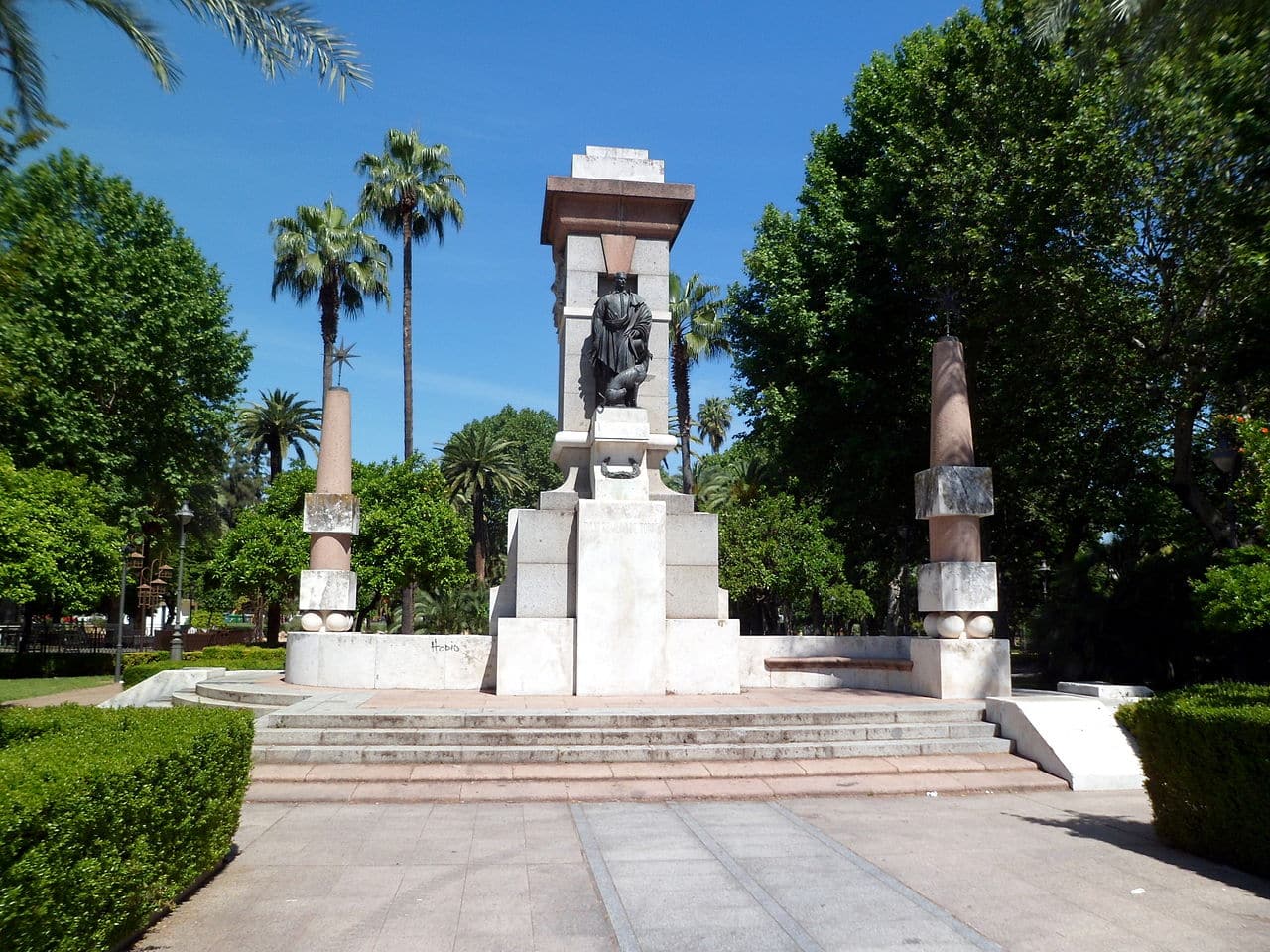
Memorial monument to Julio Romero de Torres
If during a one-day stay in Córdoba you have time to see all of the above, you can say that your visit was worth it. However, if you have some free time, you could take advantage of it to also learn about the Royal Collegiate Church of San Hipólitowhere kings are buried Ferdinand IV y Alfonso XI. Or, already on the outskirts, the Sanctuary of Our Lady of Fuensanta, built at the end of the XNUMXth century in the Mudejar Gothic style, although its façade, from a later reform, is Baroque.
On the other hand, in the Agricultural Gardens you will find the memorial to Julio Romero de Torres, the famous Cordovan painter, work of Juan Cristobal Gonzalez Quesada. And, scattered around the city, you have statues in honor of Maimonides, Averroes, Caliph Alhaken II or Great captain. But more fame have the so-called San Rafael triumphs, a set of monuments that reflect the devotion of Córdoba for this saint, who is its custodian.
In conclusion, we have shown you what to see in Cordoba in one day. But our recommendation is that, if you have that possibility, you visit this beautiful city of Andalusia more calmly. Because it is one of the most impressive and monumental in the world and requires careful contemplation. In fact, we have left in the dark its magnificent palaces. For example, those of Viana, the Fernández Mesa or the Marquises of Carpio. But, to end your stay in the city, have a drink in the Corredera square, one of the nerve centers of his social life.